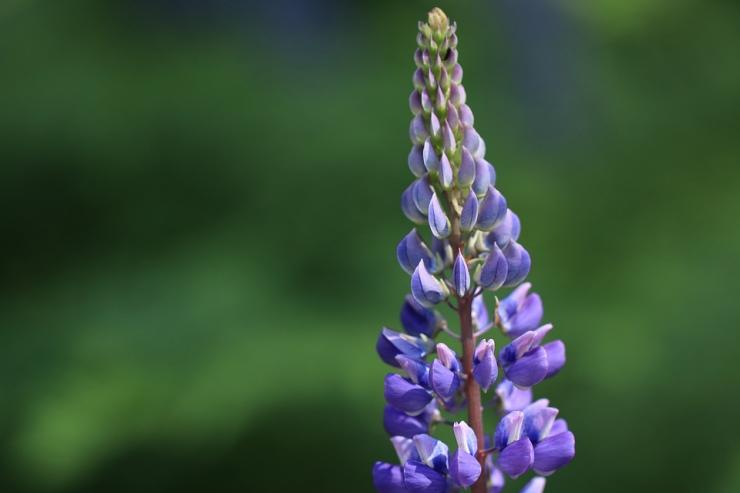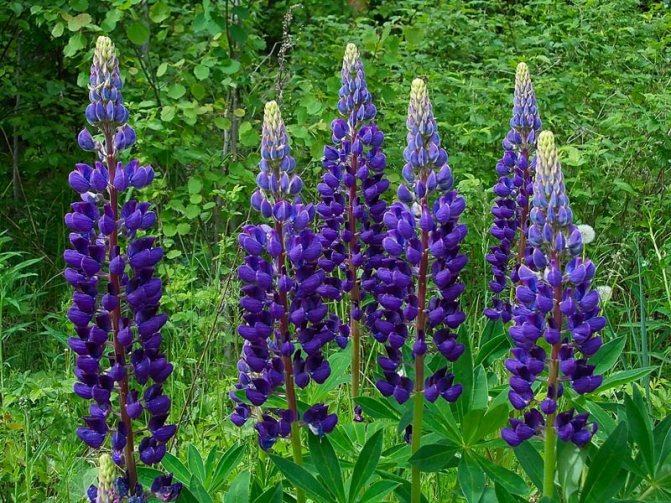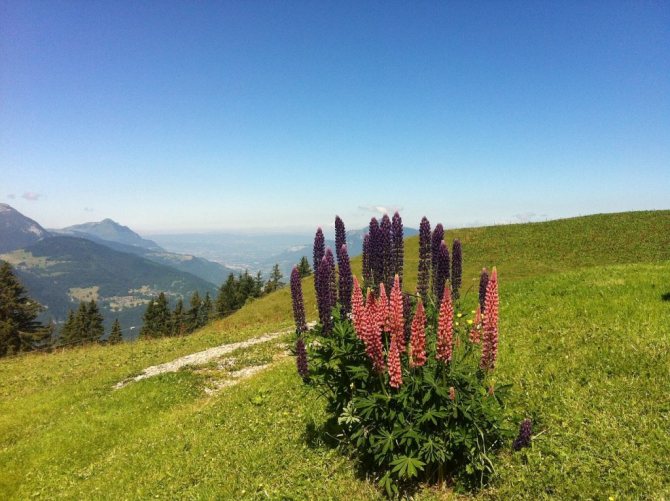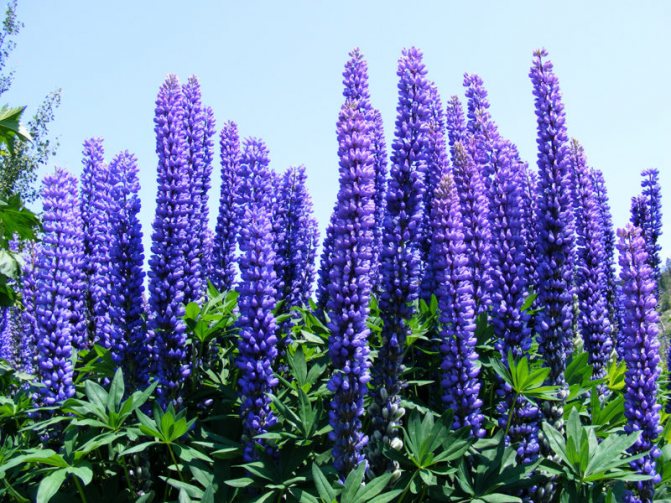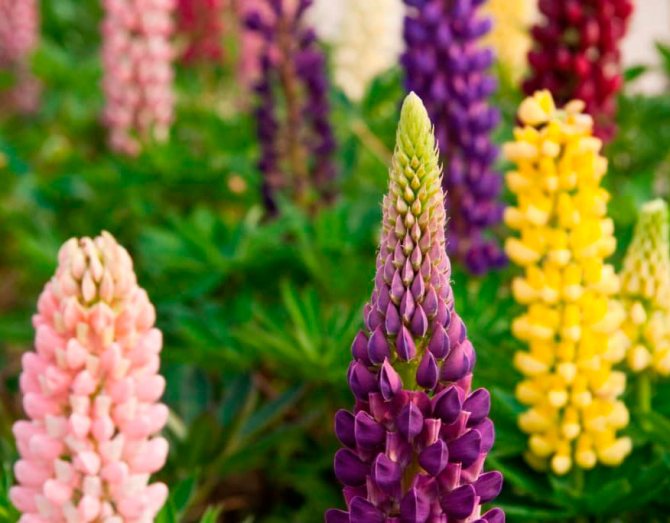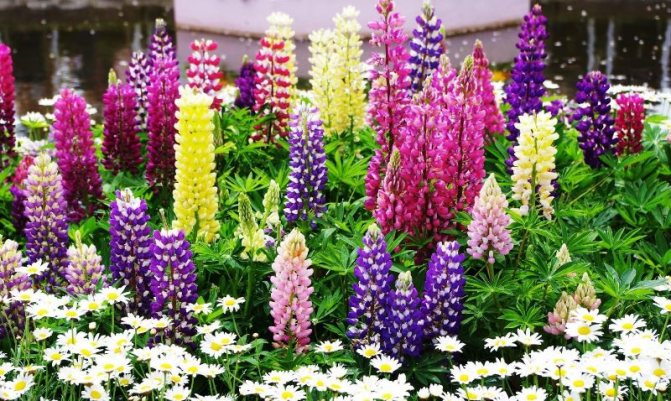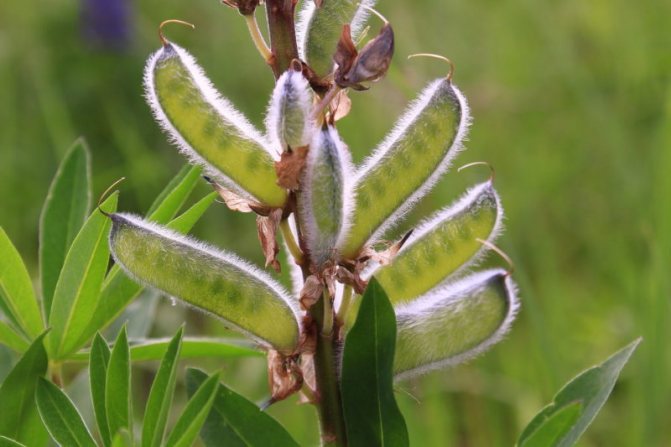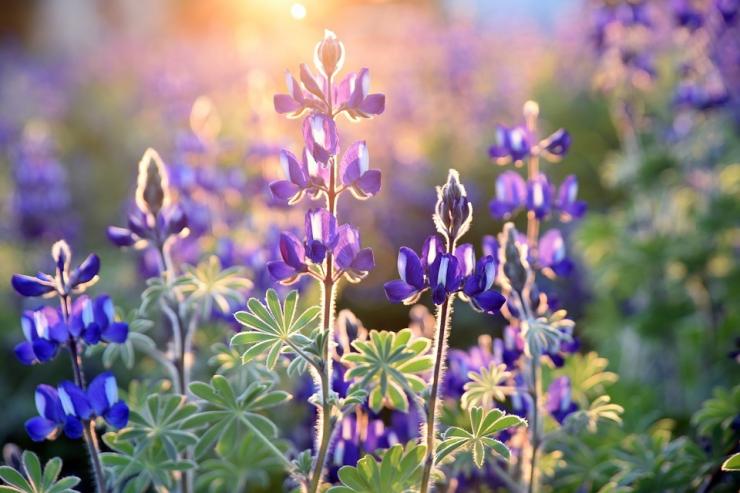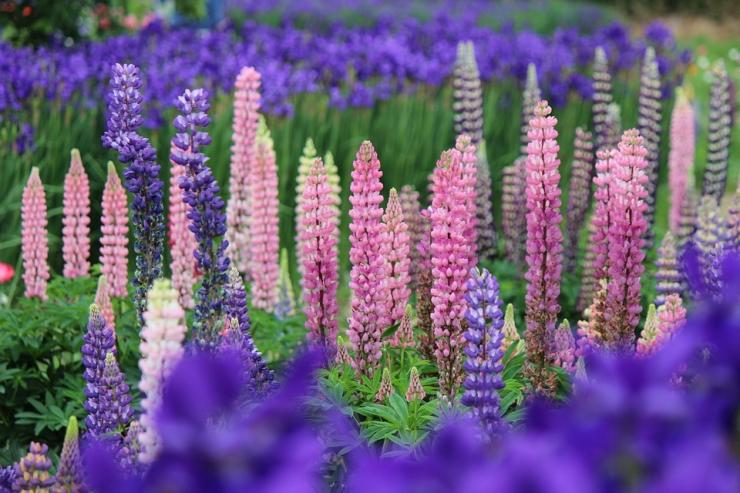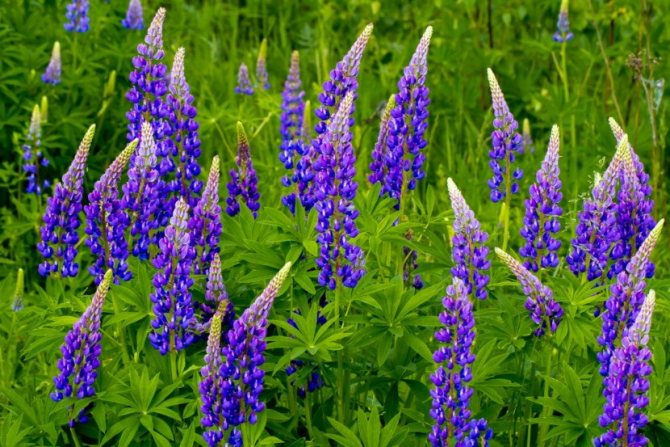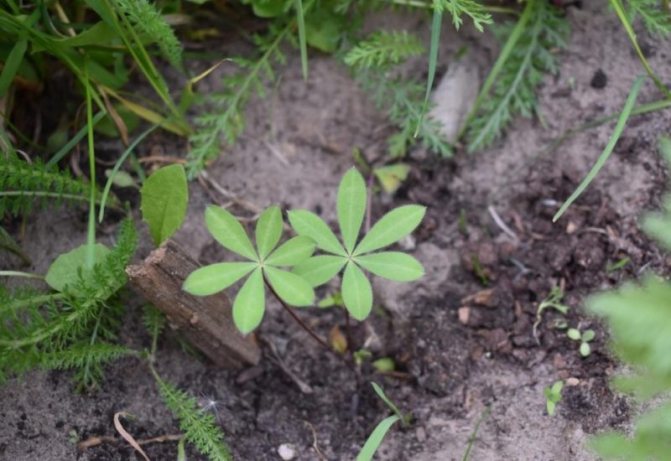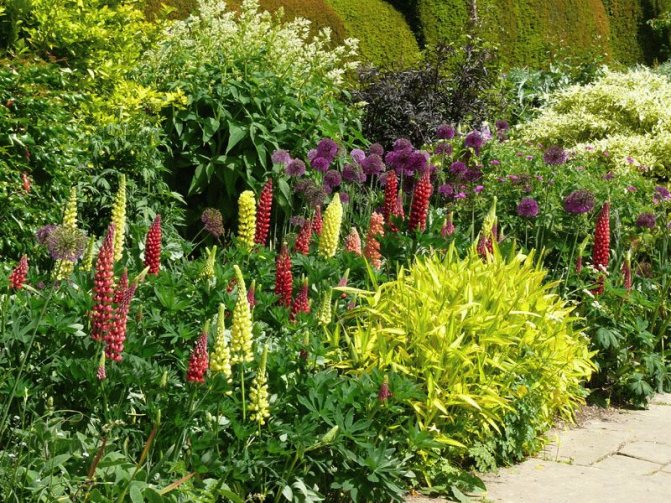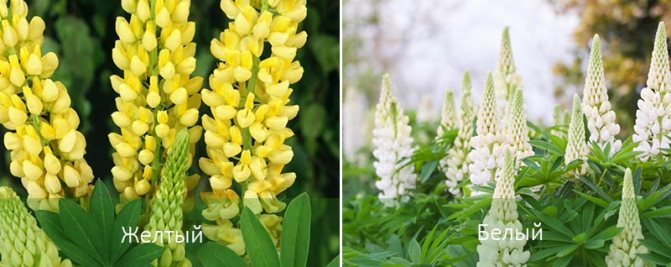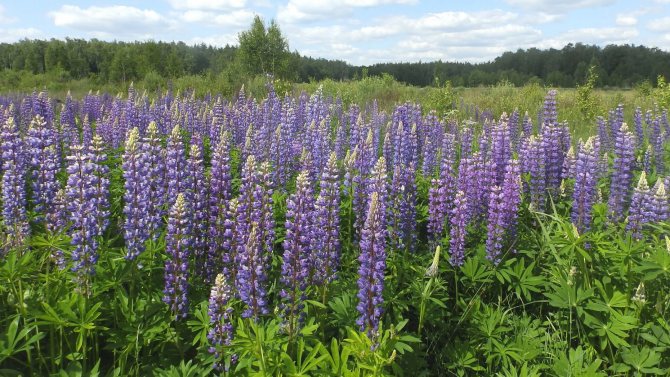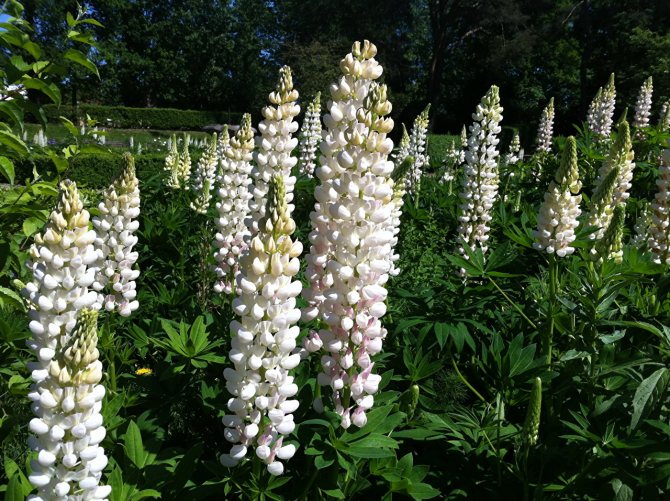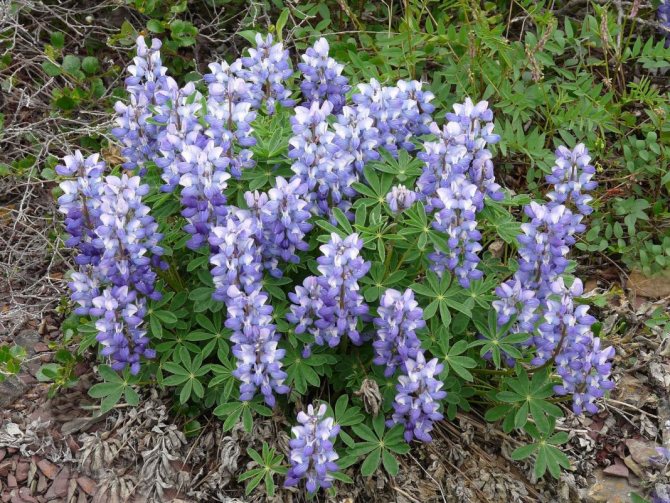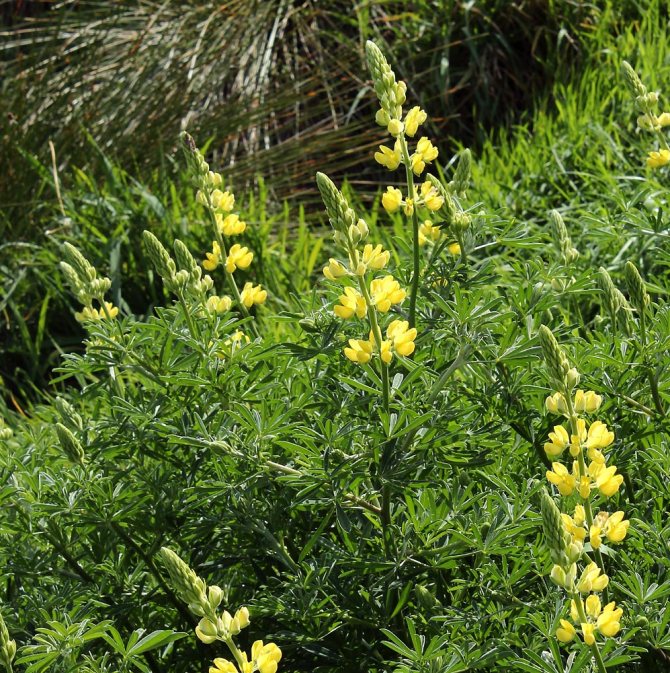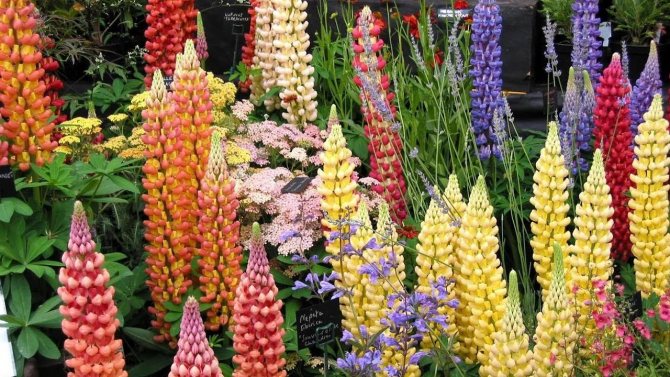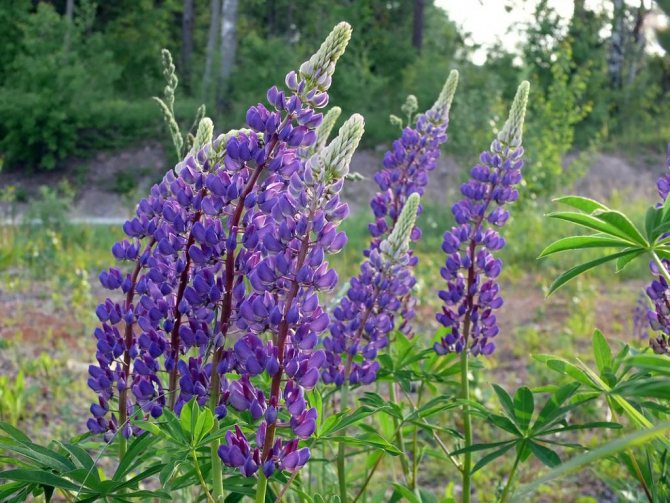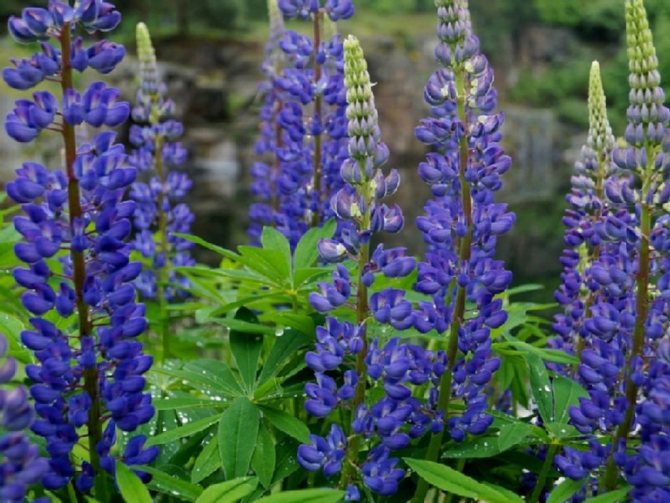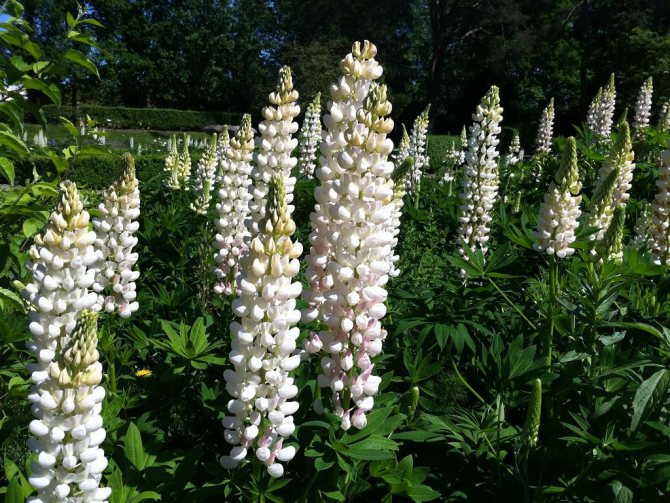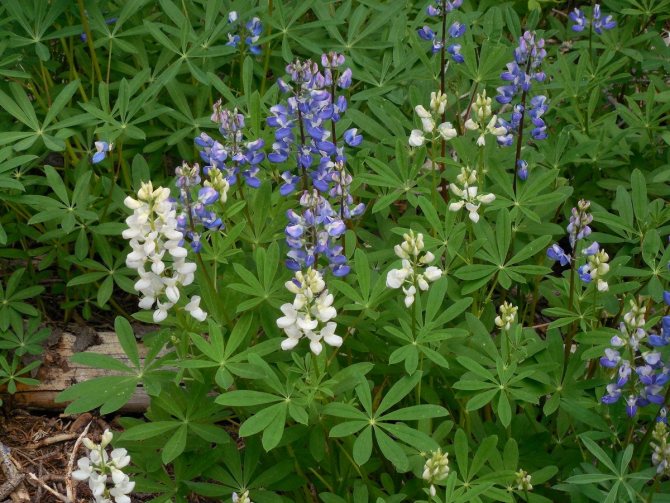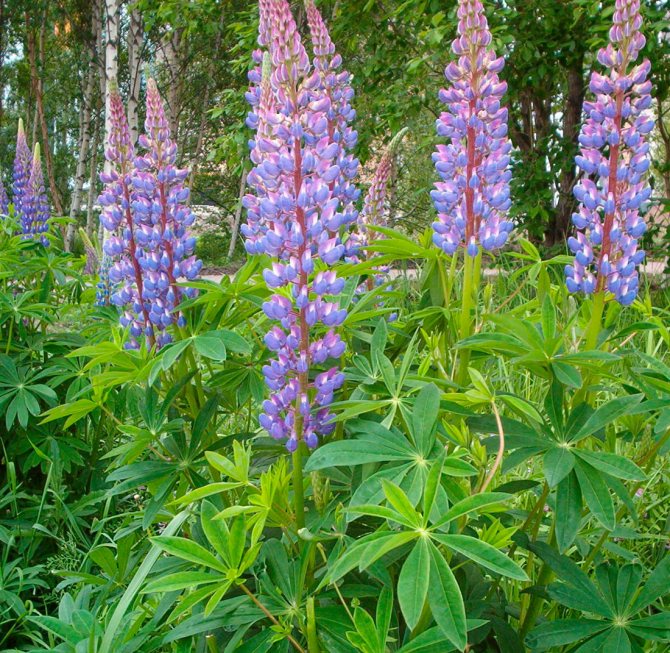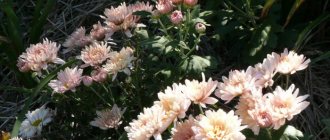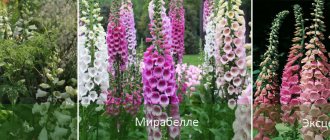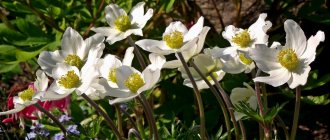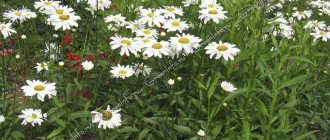What are lupins, when to plant, what kind of soil this plant prefers, is it possible to grow them from seeds - let's take a closer look. The beauty of these flowers inevitably attracts the eye and makes you want to plant them in your garden. The multicolor is amazing, they can be white, yellow, red, pink, blue, dark red and even tricolor. Look great in a company with other garden flowers, decorate flower beds, paths, alpine slides.
In addition to the aesthetic effect, these plants improve the structure of the soil, enrich it with nitrogen. With all this, these flowers are not at all capricious, the process of growing them, caring for them will not give you much trouble.
When do lupins bloom? This time comes with the arrival of the calendar summer - in June, lasts about a month. It is noteworthy that perennial representatives can give color twice a season - in the second half of July, and then in August.
There are about 200 species of this decorative flower, all of them are similar to each other (the shape of a candle, the leaves are similar to palm leaves), have insignificant differences in the structure of the inflorescences.

Leaf after rain
Lupine is a plant from the legume family, it can be both annual and perennial, it has thick long roots that rush into the depth of about 2 meters. In addition to the work of the roots, the ground part also contributes to the enrichment of the soil. It is cut off and buried in the ground to a depth of about 20 cm, where it safely decomposes, thereby giving the soil useful substances, and lowering acidity.
For all its decorative qualities, this plant is a fodder and green manure crop.
Inflorescences and leaves, photo:


Botanical description
In Russia, 4 types of plants are bred, and the legume family has up to 800 species of culture. Flower description:
- plant on a herbaceous or woody stem up to 1.6 m high. Green stems can be either thin or thick, depending on the species. There are erect and branched;
- palm leaves sit on long petioles. Foliage greens of varying intensity with a red or purple tint;
- the root system is strong, the main root extends to a depth of 2.5 m. The oval-elongated leaves can be small or large;
- flowers of various colors, and it changes with age. At the end, the flower can be light or dark;
- fruits - bivalve beans, which differ in size, shape in different species.
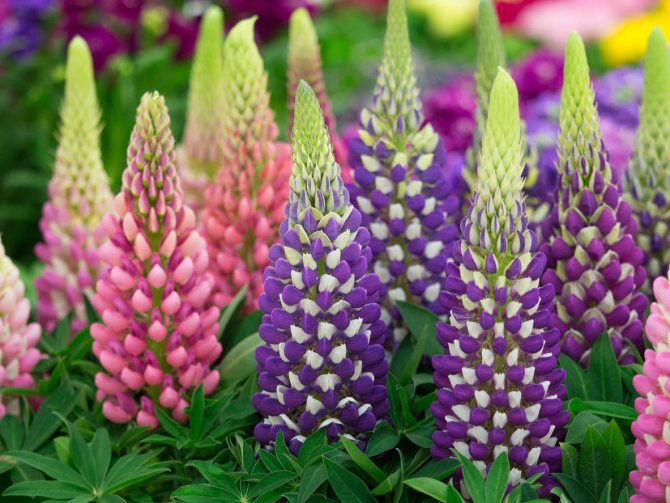

What is perennial lupine
For your information! Popularly, the plant may be called a "wolf bean", as people find a dried bean similar to a wolf's tail. Light brown, oblong seeds.
Briefly about the history of appearance
The history of lupine as a culture has more than 4 millennia. Seeds and empty beans were found in Egyptian tombs dating back to the XII Dynasty of Pharaohs (two thousand years before Christ).
Historians tend to believe that lupine as a culture was mastered by the ancient Peruvians. The museum of the city of Lima (Peru) contains a stone with drawings of the seeds and leaves of the plant. But the seeds found were larger than those of wild flowers.
The Egyptians, Greeks, Europeans domesticated lupines, based on the needs of society, in order to obtain green food, medicinal, etc.
The cultivation of the modern wolf bean has been influenced by the agricultural activities of man and science, due to which the biological properties have changed, some features of the wild plant have been lost.
Plant features
Lupine flowers are valuable not only as ornamental plants for decorating summer cottages. The plant enriches the land with nutrients, it is used as feed for livestock and poultry.
Its roots contain bacteria that can bind free nitrogen, which enriches the soil. Lupine seeds contain a lot of valuable protein, more than in all legumes, and green mass contains 10-12% fat.
White lupine is especially suitable as a valuable feed.
Note! In addition to healthy proteins and fats, the plant contains toxins that can cause serious diseases.
Is the plant poisonous
Seeds and shoots contain alkaloid substances (toxic and bitter). They have a detrimental effect on the nervous system, like nicotine. The ingress of toxic substances into the human or animal body causes paralysis of the respiratory organs. Poisons disrupt the functioning of the liver, because of which a person can even get cirrhosis. A person may die from severe poisoning with lupinide and glycoside.
Important! In case of poisoning, the victim is given a lot of drink with activated charcoal, which removes ammonia from the body.
Lupins - poisonous or not - a question that arises for novice gardeners. Most of the toxic substances are contained in seeds, a little in flowers. For a person to be poisoned, you will need to eat a handful of seeds and more than one flower.
Cut flowers look great in bouquets. When asked whether it is possible to put lupins at home, the answer is unequivocal - it is possible. Just don't keep the bouquet in the bedroom. It is advisable to hide from children and pets.
general characteristics
Despite the huge species diversity, there are several traits that are common to all plants. Let's consider them in more detail:
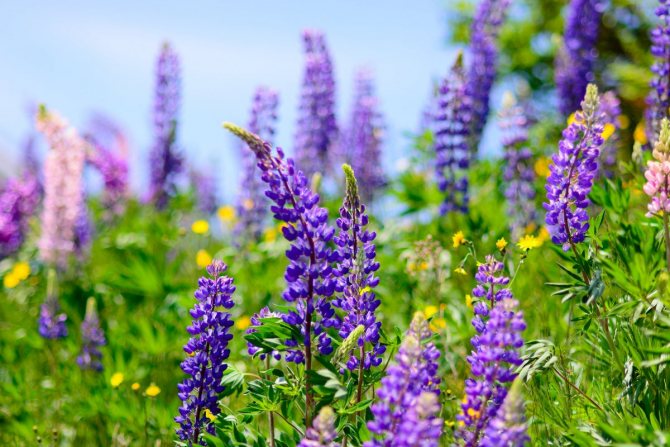

Lupine
- The root system is of the rod type. Surprisingly, in some specimens, the root goes 2 meters deep. There are small pimples that promote active absorption of moisture and nutrients.
- The stems are dense and herbaceous, erect or, conversely, protruding. Covered with palmate-complex leaves with long petioles.
- Inflorescence is an apical brush. The dimensions are up to 1 meter.
- The color scheme is impressive, especially when you consider the hybrid types of lupine: white and pink, purple and yellow, cream and so on.
- Seeds are formed immediately after flowering. When the beans are ripe, they crack, scattering the small seeds a fair distance.
Description of perennial lupine species and characteristics of varieties
Perennial lupine as a honey plant
Of the variety of lupine species in Russia, only 4 are cultivated:
- narrow-leaved;
- yellow;
- white;
- perennial.
Perennial is not pretentious to growing conditions.


Lupine multifoliate
Summer bouquets are made from it, it has many varieties and types that differ in characteristics:
- the beginning of flowering: some bloom in the year of planting, others form inflorescences for a long time;
- by flowers;
- on the color of inflorescences.
There are especially many varieties among the hybrids bred by breeders: Yellow Flame, Aristocrat, Minaret, Scarlet Sails, etc.
Lupine narrow-leaved, or blue
An annual self-pollinating plant with a height of more than a meter. The name "blue" does not mean that the inflorescences are blue. They can be white, purple, pink. The seeds of the flower are interesting, they seem to be painted.
The plant is viable to habitat conditions, frost-resistant. The most common varieties of narrow-leaved lupine are:
- Snow;
- rainbow:
- Hope;
- Knight.
Important! The greens of not all varieties of the blue flower are suitable for livestock feed.
Lupine multifoliate
In the natural conditions of the Mediterranean climate, the USA, where the plant comes from, in the central regions of the Russian Plain, in Siberia and the Urals - everywhere lupine is comfortable.
The perennial has flowers with different colors. Loamy and sandy loam soils are favorable for the growth of many-leaved lupine.
Continuation of flowering in varieties is different. Russell has it in June and lasts no more than 3 weeks, the minaret blooms for a month.
Lupine yellow
Annual plant is medium-sized (up to 1 m).
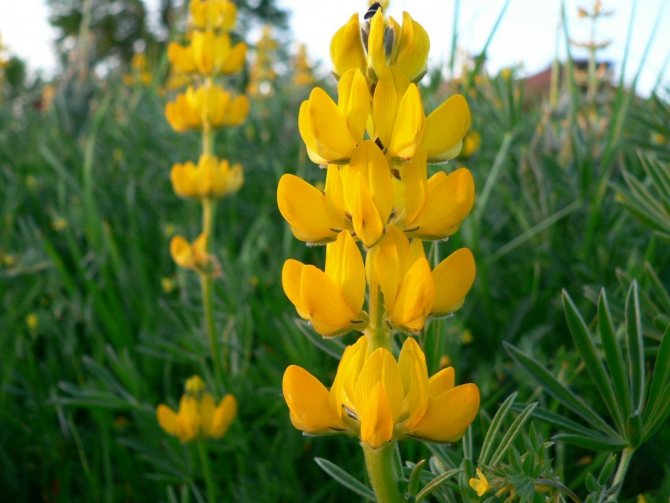

Inflorescences-ears of yellow, pale orange flowers with a pleasant aroma
It is rarely planted as an ornamental plant; the variety is more valuable as a fodder crop.
Especially popular:
- reliable;
- zhytomyr;
- Torch;
- Demidovsky.
Lupine white
Self-pollinating plant up to 200 cm high. Annual with bluish and pale blue inflorescences. It is thermophilic, therefore it prefers moist soil. Among legumes - the most productive crop.
Degas, Desnyansky, Gamma are popular varieties of white lupine.
Protection from pests and diseases
Important nuances:
- The perennial plant is attacked by parasitic insects: tuberous weevils and aphids. When pests are identified, adults, larvae and eggs are collected. To destroy parasites, soil and green mass are treated with insecticides. Effective drugs: Actellik, Regent, Aktara, Confidor, Fitoverm. With a small number of pests, garlic tincture helps.
- Herbaceous perennial is rarely sick, the main problem is anthracnose. Fungal disease is a consequence of excessive soil moisture, lupine growing in the shade, combined with low temperatures and waterlogging of the soil. To destroy the fungal flora, fungicides are used: Skor, Arcerid, Fundazol, Ridomil, Topaz. It is important to adjust watering: pathogenic flora develops in wet areas. If the planting area is wrong (a lot of shade, lowland), the next time you need to take into account the mistakes, and plant a "wolf" flower in a sunny, open area.
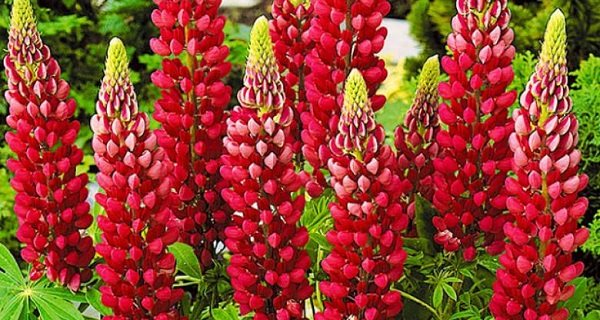

Methods for increasing plant resistance to diseases and pest attacks:
- dressing seeds in a fungicide solution;
- timely removal of weeds and fertilization;
- creation of suitable conditions for vegetation;
- careful digging of the soil before planting the "wolf" flower;
- prevention of excessive moisture: moderate watering,
- optimal soil composition;
- alternation of crops on the site;
- a set of agrotechnical measures, taking into account the type and variety;
- timely removal of infected specimens, withered, dried leaves and inflorescences.
Features of caring for lupines in the garden
The culture is unpretentious, but in order for the plant to show its full potential, it is necessary to follow the individual nuances of cultivation.
Lupine as a siderat - when to sow and when to bury
Lupine is a flower that needs lighting, because it is light-requiring. The plant will not survive a light shadow.
Note! Lupine is not planted where legumes were previously grown. Growing a strong and flowering plant will not work.
Watering
In order for the plant to develop quickly, it must be properly watered. Watering is especially important in the first year of active growth. The flower is watered abundantly, but the roots are not allowed to flood. They will get sick from dampness, the plant will die.
After watering, they thoroughly loosen, remove weeds, and also add soil under the bushes, protecting the root collar from strong winds and drafts.
By the second year, the number of waterings is reduced to 2 times a week if the weather is hot and dry.
Spraying
When lupine is cultivated for livestock feed on an industrial scale, it is sprayed with herbicidal preparations in order to prevent disease and plant death.
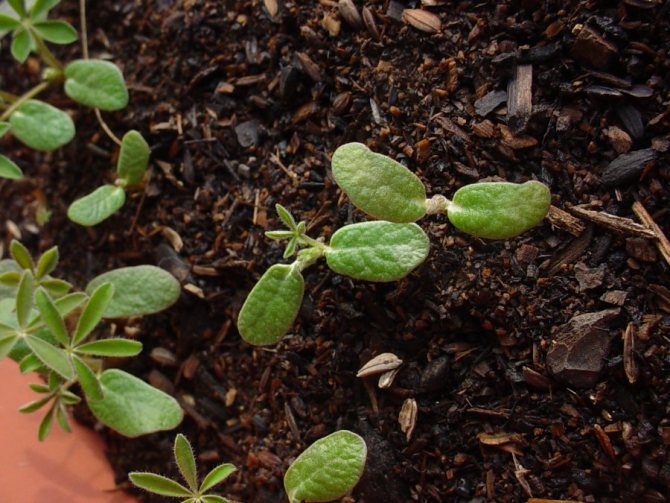

Sprayed as soon as the seedlings stretch
Humidity
Lupine is a plant that prefers a hot and dry climate, so you shouldn't spray it additionally.Waterlogging will have a detrimental effect on the health of the roots.
Priming
Fertile, well-drained, slightly acidic soils suitable for lupine. The plant does not bloom, and the foliage is faded if the ground is acidic. Lime is added before planting.
Important! Peat is added to an overly alkaline soil.
Top dressing
The wolf bean does not need nitrogen as it builds up on its own in the roots. The plant is fed in the spring with minerals: phosphorus, potassium before the formation of buds. The introduction of boron, molybdenum will strengthen the plant's immunity and protect against diseases. Boron enhances budding. In the flowering phase, a little organic fertilizer is applied to ripen the seeds.
What is sick?
During the period of active bud formation, the plant can be affected by aphids. Delphinium and lupine are often affected by weevils and sprout fly larvae. Another insidious pest is the May beetle, which eats flowers with a huge appetite. Beetles are manually collected and treated with insecticides.
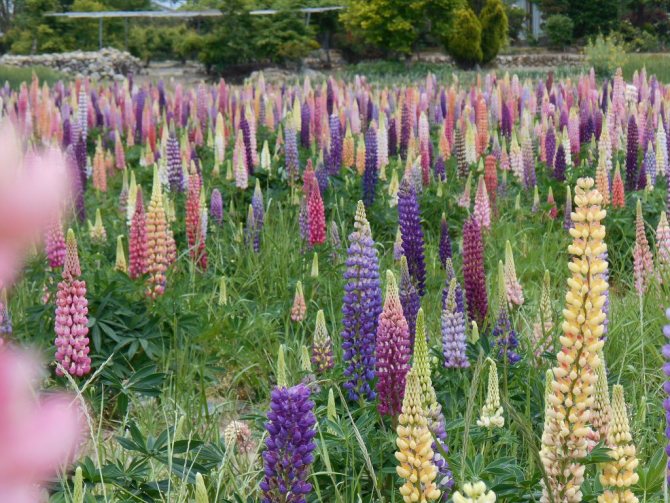

Varieties of lupine
Of the diseases, root or gray rot is the most dangerous. A lot of trouble for gardeners is also caused by phomopsis, spotting, mosaic. They usually occur with improper care, planting in too humid, swampy areas. For prophylactic purposes, all seeds are treated, infected plants are immediately removed.
Features of winter care
Reproduction of geraniums at home, when to plant, so that it blooms in summer
When the lupine begins to fade, the plant's life processes slow down.
Trimming dried elements
From the second half of October to the second decade of November, lupines are prepared for wintering:
- cut off yellowed, dried foliage;
- remove peduncles.
Hilling and preparing for winter
As the plant grows, its stem rises higher above the ground, which is why the root collar is exposed. Before covering the flower for the winter, sprinkle (sprinkle) the bare neck with earth.
And, although the wolf bean can easily endure mild frosts, caring gardeners cover it with spruce branches and straw. A thick layer of sawdust is poured under the bushes.
How to care
In the first year after planting a crop in open ground, care involves removing weeds and maintaining the soil in a loose state. Also, do not forget about watering. If there is an exposure of the root collar of the culture, then the stem has to be spud. At the initial stage of development, the formation of the aboveground part is slow. Lupine intensively builds up the root system, so it requires watering.
In the second year, care involves timely hilling and top dressing. Old cultures lose their decorative function, flowering is not so abundant, so once every 4-5 years, planting lupines needs to be renewed.
If the area where lupine grows is exposed to frequent and strong winds, then the bushes should be tied to wooden pegs. To prolong flowering, it is necessary to remove already faded flowers. This activates the culture for re-flowering, which can be observed in August. In addition, wilted buds give the bush an unattractive look.
If you used perennial lupine for planting, then you can leave it for the winter. To do this, it will have to be mulched with peat or sawdust. Thus, root freezing can be prevented. If the autumn is dry, then perform water-charging irrigation. But how to choose a sprinkler for watering a garden will help you understand the video from this article.
When the plant is already 2 years old, it is necessary to feed it. this has to be done before flowering begins. You can apply the following types of fertilizers:
- superphosphate and potassium chloride 2: 1 per 1 m2;
- a couple of tablespoons of ash for each plant;
- organic feeding;
- on sandy soils, fertilizing with magnesium or dolomite flour is necessary.
When bud formation is observed, aphids or sprout flies can attack the plant. To combat them, it is necessary to treat plants with insecticides. Also, lupine can be influenced by diseases. Most often these are rot, wilting, spotting and rust.
It will not be necessary to fight pests and fears if you adhere to all agrotechnical rules. The first step is the rules of crop rotation. You can re-place the plant on the site only after 3 years.
When and how it blooms
Blooming lupine looks gorgeous. The inflorescences are combined into one lush multi-flowered raceme. The flowers of the plant can have different shades, bright, elegant.
The flower cluster in some varieties is long, up to 100 cm, with a set of 60–80 buds, tightly pressed against each other. Others have many wide but short inflorescences.
Note! Lupine has stable peduncles, they are not afraid of heavy rains and winds.
Types of flowers
Varieties are distinguished by a variety of types:
- terry;
- smooth;
- semi-double.
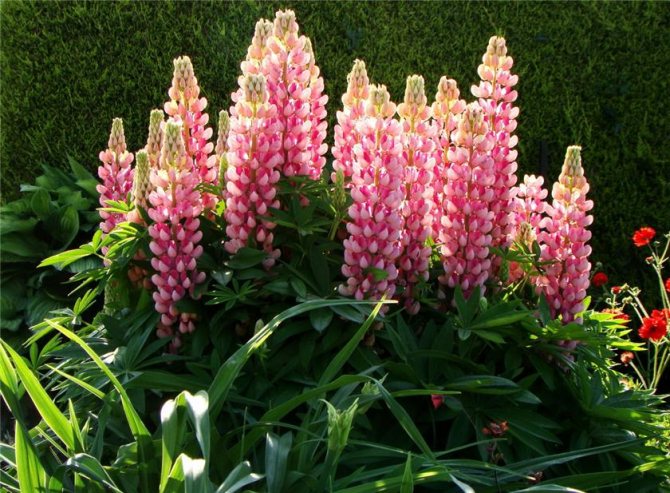

Varieties with double flowers look spectacular
Flower shapes
Lupine in bloom resembles multi-colored candles, someone sees an ear in the peduncle.
The plant has 5 petals per flower. The topmost one is larger, wider than the rest, is called a flag or sail. The side petals, two of them, are smaller in size, these are the wings. The lower ones are curved, fused at the base, these are boats.
The flower has a pistil with a stigma in the middle and 10 stamens.
Flowering period
The flowers of the wolf bean bloom in early summer, in June. Since the buds do not open all at once all together, flowering is long, lasts almost a month.
The peculiarity of the plant is that perennial lupine can bloom twice a year. Usually it blooms for the first time in the second half of June, the second - at the end of August.
Note! To prolong flowering or wait for a second one, the withered flowers are cut off.
Wild lupine, or field lupine, is distinguished by a long flowering. It got its name because it can grow everywhere: in the field, forest, along the roads. If this blue flower gets on the site, it is difficult to get rid of it.
Varieties
As already mentioned, there are about 200 subspecies of lupine in the world, but only 10 of them are domesticated. Nowadays, many breeders are working on the development of new colors, which will differ significantly from the existing ones.


Lupine field
In multi-layer plantings, species of standard sizes are used, they look great on a distant view, they do not get lost among other plants. Most often, boles reach heights of up to 1m, but this largely depends on the soil.
It is best to pick up the plants so that they do not have sharp dividing lines, the rows should smoothly merge into one another. Then your flower bed will look like a flower bedspread.
There are also dwarf varieties, they are planted near curbs or in order to separate one part of a garden or flower bed from another. Border lupine reaches a height of no more than 20 cm and has many different colors. The methods of growing a flower are completely identical with the cultivation of other species.
Neighborhood in a flowerbed is important, it is worth carefully choosing neighbors for a lupine, the surrounding flowers should not be higher than the stem.
Lupine will get along well with:
- irises
- daylily
- hosts
- delphiniums
- phlox
- nivyaniks
These plants will not allow the rhizome to grow, and the nitrogen released by the plant will give enough vitality to its neighbors. Near lupine, all of the listed varieties of flowers will be especially bright.
Next, we will get acquainted with the most popular species that can most often be found in flower beds and in gardens:
back to menu ↑
See also: Anemones: 25 species, features of reproduction and care, planting in open ground, forcing in winter, a description of the medicinal properties of the plant (50+ Photos & Videos) + Reviews
Roussel
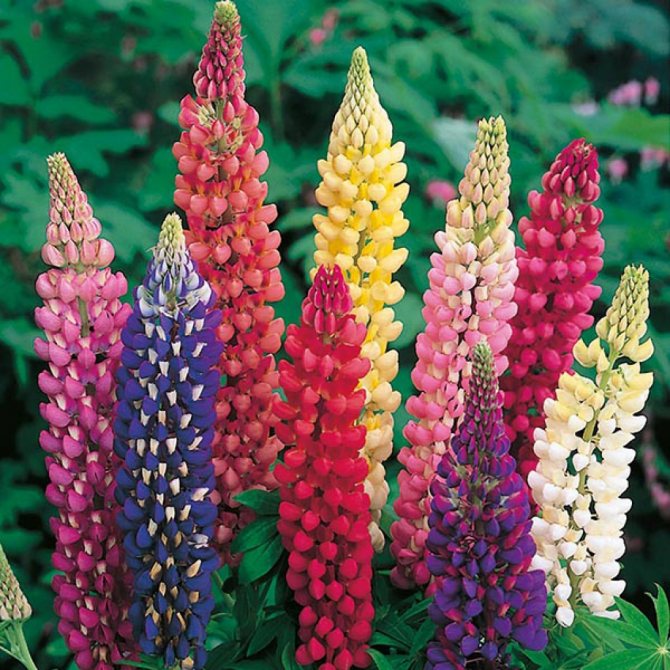

Lupine Roussel This variety is referred to as perennials, usually seeds are sold in special stores with a mixture. The team includes stems with different brush colors, they can be yellow, white, carmine, pink, blue.
The stem is characterized as follows:
- erect plant, with a powerful trunk
- reaches a height of 1-1.3 m
- each brush is about 30-40 cm
- grows best in sunny areas, tolerates partial shade
Propagated by seeds, sown in open ground in early spring or before winter. The variety does not require special care, weeding, loosening the soil and periodic watering in drought will be enough. For the winter, the stem must be pruned, although the variety is considered frost-resistant, it does not hurt to cover or mulch. Lupine Roussel will perfectly tolerate short droughts, but during the flowering period it is better to slightly increase watering, then the brushes will be brighter and will delight the eye a little longer.
A distinctive feature of the variety is that the brushes can be used for cutting, this stimulates the re-flowering of the stem in July-August. The plant looks great in group plantings, single copies are also good. Roussel is one of the most nitrogen-containing varieties of garden lupine.
back to menu ↑
See also: Ranunculus (Buttercup): description, types and varieties, cultivation and reproduction, planting in open ground and care, useful properties (50 Photos & Videos) + Reviews
Russell's Red Flame
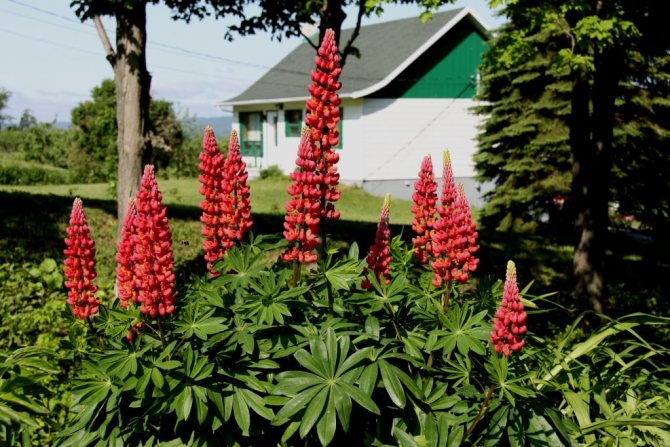

Russell's Red Flame A perennial with its bright, carmine-red tassels looks great against the backdrop of a hedge. Perfect for group plantings, it will be an excellent distant background for the rest of the flowers of a multi-layer bed. This variety will create a spectacular landscape and solo, scarlet brushes look great on any area, and the green foliage will only favorably emphasize the saturation of the color of the flowers.
The plant is sown according to the generally accepted rules for lupins; with the correct work, flowering begins in late May-early June and lasts about a month. Re-flowering is possible if the cut rules are followed.
An adult bole has the following characteristics:
- plant height up to 1 meter
- flowers collected in a brush occupy about 45 cm on the stem
- the brush itself is quite dense, has many colors
- flowers are medium, up to 2 cm each
- leaves are large, finger-shaped
A distinctive feature of the variety is the special aroma of flowers, their aroma is delicate, but persistent, especially spreads in the evenings.
Reproduction is best done by seeds, cuttings may not always give the expected result. Seeds purchased in specialized stores will have a high germination rate and always guarantee an excellent result in accordance with the color of the brush.
back to menu ↑
See also: Badan: description, types and varieties, planting and care in the open field, medicinal properties and contraindications (60+ Photos & Videos) + Reviews
Governer


Governer This type of lupine has become the basis for breeding many varieties and hybrids for the garden. The resulting stems are distinguished by large colors, and the brush in which they are collected is denser. The governer is otherwise called multi-leaved, since its stem is covered with many large leaves.
Govrner is classified as a frost-resistant species of lupine; it is used for cultivation in multi-layer flower beds and long-range ridges.
The general characteristics of the trunk are as follows:
- an adult plant reaches a maximum height of 1.4 m;
- refers to perennials;
- inflorescence brush can reach 45 cm;
- the flowers are large, tightly pressed against each other;
- the color of the flowers is blue-white, bright;
- the stem blooms for 3-4 weeks, depending on the soil and watering;
- when trimming the brushes, re-flowering is possible in August;
- develops better on light soils;
- perfectly tolerates sunny areas, but not against partial shade;
- leaves are large, with slight pubescence on the underside, have a bright green color.
Brushes look great in prefabricated bouquets, but won't last long.Governer loves to solo, but it is better to admire him in a flower bed. The species is usually propagated by seeds, but cuttings also give good results.
back to menu ↑
Read also: Ageratum: description, planting in open ground and caring for it at home (30+ Photos & Videos) + Reviews
Chatelain
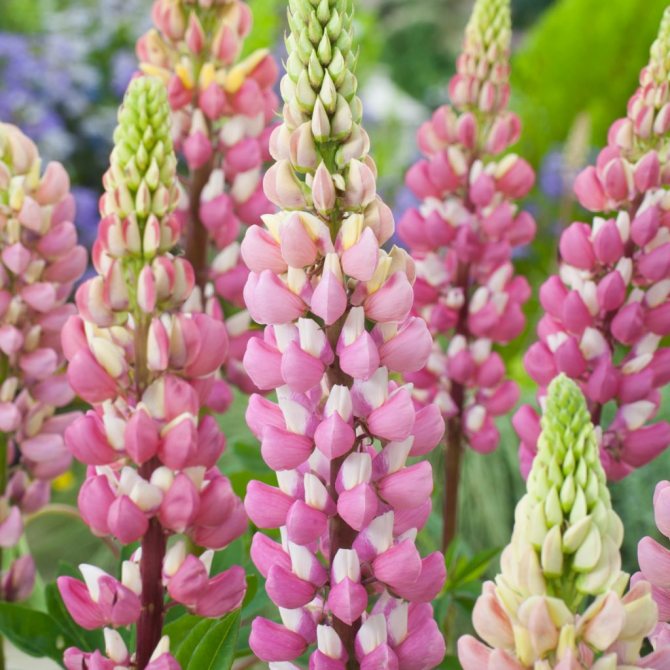

Lupine chatelain A perennial with the most interesting color is the Chetelain species; the stem will also differ from its relatives in the height of an adult plant. Most often it is used in the middle line of multi-layer ridges. To soils, like all lupins, it is not picky, but it will develop better on light, loose soils, without stagnant water.
Sowing in open ground is carried out in accordance with all the rules and recommendations for this variety, seedlings appear under proper conditions in a month, flowering will not be earlier than the second year of life.
Chatelain has the following characteristics:
- the height of an adult plant reaches a maximum of 90 cm
- fingerlike leaves on high legs are alternately located along the stem
- brush can reach 35 cm
- flowers have a pleasant pink-white color
- each flower is medium size
- weak aroma during flowering noted
Abundant flowering takes place in June-July, when the brush is cut, the re-emergence of peduncles is possible. Some growers grow this species as a low hedge that divides the garden into plots.
The secret in growing is keeping the distance between the bushes, it should be at least 20 cm.
back to menu ↑
See also: Quince: rules for planting in open ground, caring for a fruit tree with fragrant fruits from the Moscow region to Siberia. Reproduction methods (35 Photos & Videos) + Reviews
Russell mix
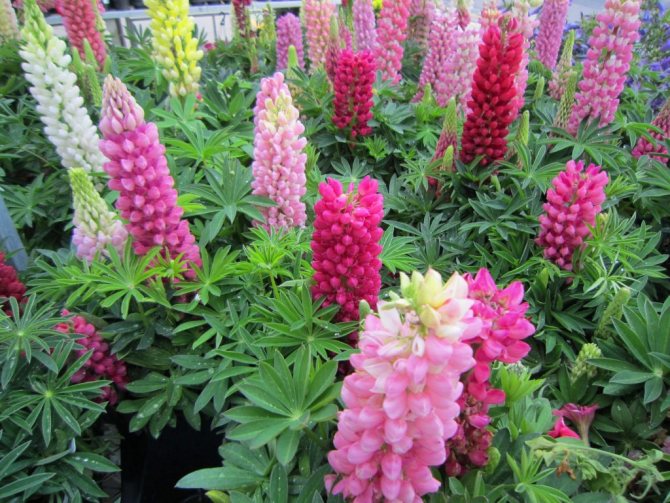

Russell mix Perennial Russell has many variegated brush colors, most often sold in prefabricated mixes of various colors. The cultivation is standard, the species is distinguished, among others, by high rates of survival even in the most severe natural conditions. Lupine of this species will easily endure drought, with proper shelter it will overwinter perfectly and in May will delight you with lush flowering.
The best places to grow will be sunny areas of the garden, but partial shade will not affect the trunk. Weakly alkaline and slightly acidic loams will allow the plant to fully show its beauty.
Russell's metrics are:
- height of an adult trunk is about 50-70 cm
- the brush is large enough, can reach 35 cm
- flowers have a variety of colors, the most common are pink, purple, blue colors
- the flower is of medium size, fragrant
The view is not suitable for a cut; it is best to admire it in its natural environment. In flowerbeds, it is better to place them in the middle rows, the low height facilitates the use in flower beds.
A feature of the species is the splendor of each brush, so there should be enough space between the plants when planting.
back to menu ↑
See also: Alyssum: species and varieties of plants, sowing seeds in open ground and caring for a rainbow carpet on the site (130 Photos) + Reviews
Passion
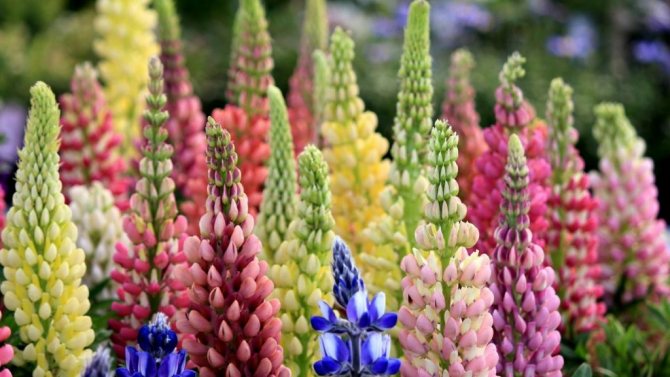

Passion One of the most spectacular types of lupine is called Excitement, its flowers are simply gorgeous. There are no particular difficulties in sowing and further care, everything is according to the standard scenario. A peculiarity of the species is its variegation and splendor of the brush with flowers. Excitement is characterized by:
- the plant can reach 1 m in height
- a brush with flowers takes about 45 cm
- each flower is medium in size, in rare cases it can reach 4 cm
- the main use of the trunk on multi-layer flower beds and ridges in the background
- brushes are not suitable for a cut, they will not be able to please with freshness for a long time, they will quickly begin to fade
It is often used near a hedge or to create a colorful carpet in one part of the garden.
back to menu ↑
See also: Perennial asters: description of 13 species, care and planting at home, methods of reproduction and growing from seeds + Reviews
Minaret undersized


Minaret undersized A low-growing perennial of the species looks great as a curb plant, it is often used precisely to divide sections of a garden or flower beds. The minaret will give preference to fertile soil in an area well-lit by the sun. Propagation by seeds is preferable, but the separation of the kidney along with the root collar has proven itself well.
The variety looks great when cut; it stands in vases for a long time. Cultivation is carried out through seedlings or direct sowing into heated soil. Sowing seeds can be carried out in early April or before winter. Cutting the inflorescences will stimulate the plant to bloom again.
It is not difficult to recognize the stunted Minaret:
- the height of an adult plant does not exceed half a meter
- flower brush can reach 25cm
- flowering lasts more than a month
- leaves are green, finger-shaped on a petiole, large
- it is bad to tolerate sudden changes in temperature, therefore, when growing, it is worth considering the weather conditions
In order for the bole to grow and develop successfully, you should regularly loosen the soil and remove weeds, superphosphate is preferred among fertilizers.
back to menu ↑
See also: Barberry: description, types and varieties, planting in open ground, care, features for different climatic conditions including Siberia (65 Photos & Videos) + Reviews
Rhapsody
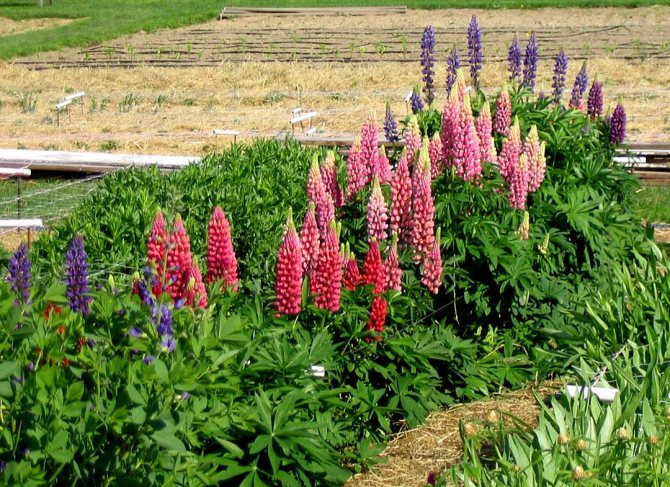

Rhapsody The variety is classified as a perennial of medium height, excellent for growing on "bad" soils of the site. It will withstand the winter cold in the shelter, summer drought is also not terrible. But stagnant water or flooding in the spring can destroy the trunk. Flowering is observed in the second year of life, flowers have a varied variegated color.
The general characteristics are as follows:
- perennial grows up to a maximum of one meter
- pyramid-shaped brush is up to 50 cm long
- flowers are large, each up to 3 cm
- dense inflorescence, flowers are close to each other
- excellent for cutting, it continues to live and smell in water
- leaves are large, emerald
The variety is used in the first year for landscaping, volumetric balls will delight the eye with luscious greenery. In the second year of life, the plant will throw itself into the eyes with variegated brushes of flowers of various colors.
back to menu ↑
See also: Marigolds (Chernobryvtsy) are one of the best annuals. Description, growing from seeds, planting and care, possible diseases (80+ Photos & Videos) + Reviews
Tree-like
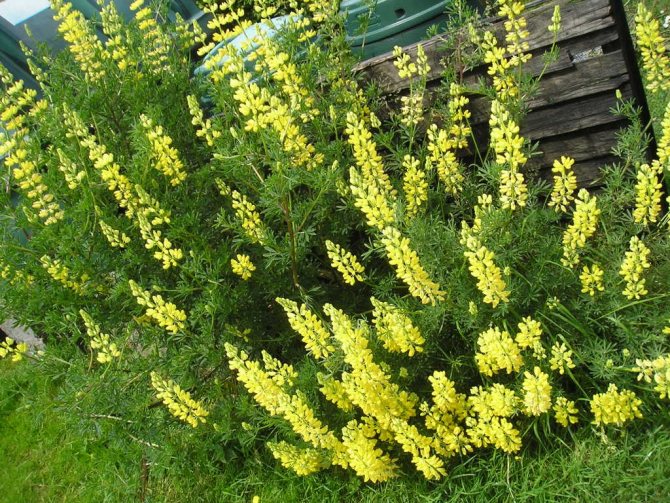

Tree lupine Perennial, which differs from other varieties and species with a powerful trunk with a kind of bark. The bole can reach a height of 1.5 meters; under proper conditions, two-meter plants are also found. The flowering period begins in the second year after sowing the seeds, and lasts a little more than a month. Usually takes place in July-August, brushes are large, fragrant, flowers can reach 5 cm.
In the middle lane, this species does not grow, even with shelter and mulching it often freezes completely... The southern regions are great for tree lupine cultivation.
Some gardeners plant several tree-like lupins with different colors on their site at once, they look very impressive during the flowering period, but the leaves are no less decorative. Luscious greenery will transform any garden.
Seed planting
The plant can be planted by direct sowing of seeds into the soil or by seedlings. For areas with frosty winters, it is advisable to plant seedlings so that the seeds do not freeze. Despite the fact that there are varieties of lupine that are resistant to frost, the risk still remains.
For seedlings, planting material is sown until March 10. The timing of planting lupine outdoors depends on the weather.
Features of this method
Autumn sowing has several advantages over spring sowing. During the summer, the soil warms up, and the seeds fall into a warm environment. During the wintering period, they will undergo a natural hardening procedure, which will increase germination.
From seeds of podzimny sowing, lupins will bloom in the same summer, and from spring seeds - in a year.
Seed planting lupine is simple, but new plants lose their parental characteristics. This happens more often with seeds harvested on their own.
Important! New lupins will retain their maternal characteristics, will delight you with a variety of shades if the seeds are purchased in the store.
Seed treatment (scarification)
Lupine seeds are very strong. Growers slightly damage the seed coat in order to facilitate germination. This procedure is called scarification and consists of several stages:
- Take sandpaper, rub the seeds, slightly scratching. Sometimes a sharp object is used. Then they are soaked for swelling.
- Arrange shock therapy for the seeds. First, it is wrapped in gauze and placed in the freezer. Having taken it out of the freezer, it is immersed in boiling water for 1 min. From such procedures, the seed bursts.
- Before planting, the seed is soaked in potassium permanganate or bleach. From a pipette, no more than 2 drops of a chlorine (10%) solution are instilled into a glass of water.
Soaking will save future plants from bacterial and fungal diseases.
The choice of container for seedlings
For seeding, cassettes, plastic cups or containers are suitable. The main requirement is the presence of drainage holes. Earth with peat and sand is poured into the container. The procedure for disinfection by calcining in the oven will not be superfluous.
Spill the soil with warm water and plant the seeds, slightly deepening. One seed is sown in glasses, several seeds are sown in containers with a distance of 6–7 cm. Cover with cellophane or glass. Place containers in a warm, lighted place.
Care of young plants
The sprouts will sprout for 15 days. The film is not removed immediately. Remove evaporating moisture, ventilate without creating drafts. Seedlings are watered with warm water, not flooding the plants and not overdrying.
Half a month before planting on the site, the seedlings are hardened: they are taken out into the street, each time increasing the walking time.
Soil preparation
When the weather is warm, the soil warms up to 12 °, young lupins are transplanted to a permanent place.
The place is being prepared in the fall. The site is dug up, fertilizing with organic matter. Too acidic soil is deoxidized with dolomite flour, 3 kg are poured onto 1 m².
Before planting, the earth is dug up again.
Landing in open ground
With a transplant to a flower bed, they do not delay. Lupins have a rapidly developing root system. The roots are sensitive, so you need to carefully transplant seedlings from containers.
Note! If the plant has at least 3 sheets, then it's time to plant it in the ground.
Pits are dug, at the bottom of which drainage is poured from expanded clay, broken brick and sand.
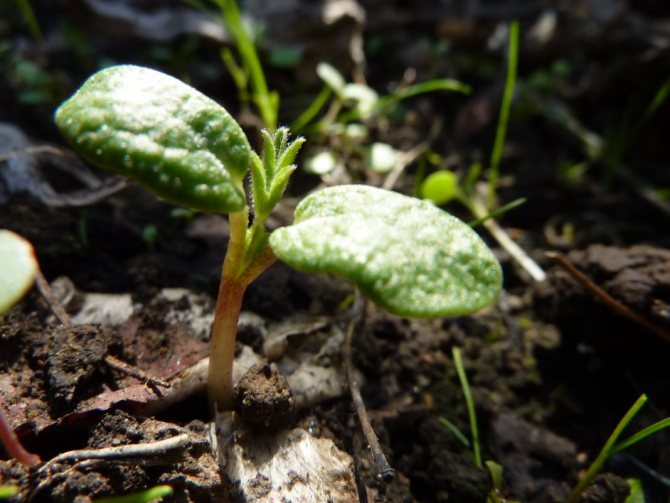

Seedlings are planted at a distance of 40-50 cm from each other
The holes are covered, watered, mulched, for example, with peat.
Terms of development and life of the plant
Lupine has several developmental phases:
- Germination. From swelling of seeds to germination of seedlings from the soil.
- Shoots. When cotyledons or own leaves appear.
- Stalking, or branching. Stem growth, formation of side shoots. At the same time, the number of flowers per plant is determined.
- Budding. In the axils of the leaves, on the tops of the shoots, buds are formed.
- Bloom. Petals begin to open from the lower flowers.
- Fruits are formed. The beans appear from the bottom up, like flowers.
- Maturation. Darkening of the fruit begins.
- Ripeness. 100% ripening of beans. All parts of the plant dry out, die off.
This is the life cycle of a lupine.
Planting in the fall in the ground
Prepare the place in advance by removing weeds, adding fertilizers and good soil.
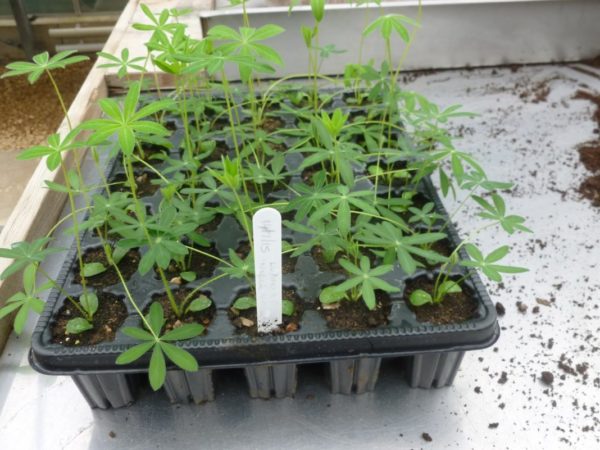

Seeds are scattered over the surface and sprinkled with a layer of peat.
During the winter, they will undergo the necessary processing and will delight you with flowering in the first season.
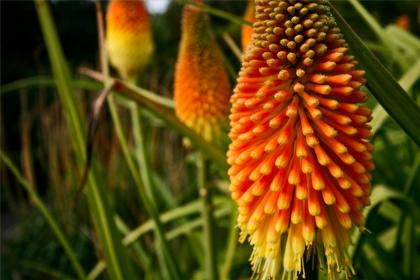

You may be interested in:
Perennial flowers for a summer residence How beautiful, bright and rich flowering can be in a summer-spring-autumn garden, if you choose the right flowers for ... Read more ...
Propagation by cuttings
Often, novice gardeners ask how lupins multiply, except for seeds. Can be propagated by cuttings. At the same time, it is possible to grow flowers that have not lost varietal characteristics.
The stalk (growth bud) is located on a leaf rosette. How is the procedure going:
- Take an adult, but not an old plant.
- Cuttings are taken from root rosettes that form from the buds at the base of the plant.
- Cut off by grabbing a small part of the root. They are planted in a semi-shaded place.
In a month and a half, the seedlings will take root.
Growing seedlings
The unpretentious species takes root well and germinates quickly enough. Even a novice florist can create the necessary conditions.
Soil and capacity
The soil should be nutritious: 1 part of sod land and peat + half as much fine, sifted sand. Before placing the seeds, the substrate is slightly moistened with a spray bottle. Soil for lupine is useful not only nutritious, but also loose so that the beans do not rot.
Germination of seeds is carried out in large containers with compartments or individual pots. High quality peat pots, yogurt containers, disposable dishes with a volume of about 200 ml are suitable.
Important! Before planting, the seeds are combined with a powder made from dried lupine roots. The essence of the method is to activate the reproduction of nitrogen-absorbing bacteria.
Seedling care
Important nuances:
- After planting, the seeds are lightly sprinkled with soil, sprayed, the container is covered with a stack or film.
- For germination of seedlings, a temperature of + 20 ° C to + 22 ° C is needed.
- Periodically, the substrate is moistened, but not poured, otherwise the seeds will rot.
- The container with seedlings should be in a bright room, but not in direct sunlight.
Transplanting
Moving the grown lupine into the ground is allowed only after the appearance of the third, real leaf. Do not wait for the plant to grow too large and elongate: late transplanting can damage the rapidly growing, stubby root system.
Many species do not tolerate cold well, and it is necessary to plant seedlings in a flower bed or summer cottage after the complete cessation of night frosts and warming up of the soil. For each region, the timing is slightly different.
Possible problems in growing lupine
Sometimes gardeners are faced with problems in growing a wolf bean: diseases, insect attacks.
Lupine is a honey plant, but it attracts not only bees, but also pests that can completely destroy the culture.
Diseases
The plant is viable, but there are diseases against which lupine is powerless:
- fusarium;
- rust;
- root rot;
- mosaic virus.
Diseases at an early stage, when the foliage begins to turn yellow, are fought with fungicidal drugs, for example, phytosporin.
Important! When neglected, the plant is destroyed until healthy flowers are infected.
Pests
May beetle loves to lay larvae on young lupins. Thick caterpillars quickly eat up the plant. Aphids, moths, thrips, wireworms, weevils are flower lovers that can destroy the plant in a short time.
They are harvested by hand or sprayed with insecticides. Moreover, they are sprayed as soon as shoots appear.
Observing the simple rules of planting and caring for perennial lupins, many problems can be avoided.
Other problems
Experienced gardeners note some difficulties in growing, for example, transplanting lupine. It is advisable not to transplant the flower, since the long taproot is very easy to injure.
The plant is demanding on good soil. He needs a slightly acidic and slightly alkaline soil. Lightweight, loose, fertilized. On poor soils, the lupine will wither away.
Note! A flower, especially a young one, needs frequent weeding, otherwise the weeds will suffocate it.
Lupine disease
Lupine is an unpretentious plant, but there are three insidious diseases that lie in wait for it at all stages of growth.
- Fusarium disease is manifested by the wilting of the flower during the formation of buds and flowering. Drying of foliage, damage (decay) of roots is also observed.
- Phomopsis reports itself with brown spots on the shoots and leaf stalks. Excessive moisture only contributes to the development of the disease, as a result of which the entire flower is affected. The result is complete drying of the plant.
- Ceratophorosis scatters brown spots all over the ground part, subsequently the flower dries up, loses its "fertility" (beans are not formed).
However, there is some good news. With all these misfortunes, the drug, Fitosporin, known to gardeners and gardeners, is quite successfully fighting. This product contains copper, is an environmentally friendly product, highly recommended for use.
This flower is planted as you like - singly or in a group. It will be better if you place these plants at the very end of the garden bed or flower garden. Their high growth can be used as a background, planting shorter counterparts in front of them. It looks great in a company with many garden representatives, and its rich palette will look appropriate next to flowers of any shade. Now you also know how lupins enrich the soil, growing from seeds, when to plant them, how to care and propagate.
Use in landscape design
Landscape designers often use lupine in their compositions. It is planted both in groups and singly. This simple flower looks luxurious and gives a festive look. They are planted with lawns, meadows, cover the unsightly places of the site.
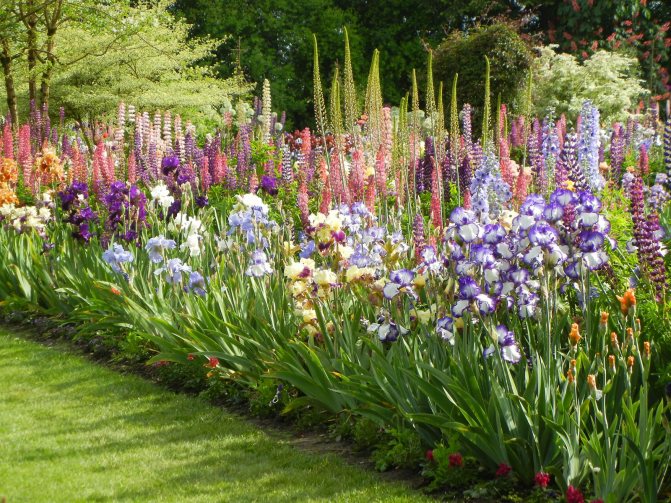

Lupines are planted as beautiful hedges, garden paths, they are decorated with borders
The flower looks great among delphiniums, phloxes, irises.
Many gardeners believe that interest in the plant is increasing. And for good reason. Lupine is not only easy to grow and care for. He will decorate any site, enrich the land with nitrogen.
Varieties and colors of lupines
The variety of a plant such as lupine is largely due to the huge number of areas of human activity in which it is used. So, if you divide the plant into main categories, we can say that there are lupins:
- annuals;
- living for two years;
- perennial;
- fodder varieties.


The existing varieties of lupins are divided into groups into plants that can bloom for one to two years, as well as perennial flowers.
In this material we will talk specifically about garden lupins, most often annual or perennial plants are planted, among them the following varieties are considered the most popular:
- "hybrid" - the most frequent visitor to vegetable gardens in the northern part of the country;
- "dwarf" - lush flowers of a smaller size than we are used to seeing in lupine, but just as bright and attractive to the eye;
- "Fickle" - a variety, the flowers of which have a complex structure and unconventional bright colors, in comparison with other varieties;
- "Heartweg king" - a frost-resistant perennial variety that grows and is constantly found even by residents of places located near the taiga.


Lupine variety "Aprikot" has one of the most spectacular colors
As for the color scheme of plants, lupine can actually be called a rainbow, so many of it contains different shades. The following hybrid varieties and their color variants are especially popular among Russians, due to the difficult climate:
- pale pink variety "Schlossfrau";
- violet-violet "Royal Ruby";
- creamy white shade of Burg Fraulein;
- snow-white grade "Albus";
- the carmine shade of the Edelknabe varietal hybrid;
- bright blue and white hybrid "Castelline";
- apricot-peach hybrid "Apricot";
- red and scarlet version of the Carmines variety;
- the traditional pink and white variety "Princess Julianna";
- minaret - a variety with all sorts of bright colors of inflorescences, most intensely expressed at the lower levels and fading towards the upper levels.


Arboreal lupine only grows in warm southern regions
It must be said that in the southern territories of the country and abroad, the tree-like lupine variety has also gained particular popularity, but, unfortunately, in central Russia and in the conditions of the northern regions, it could not have survived the winter, so it is unlikely that it will be possible to meet it.
Lupine seed prices
lupine seeds
How to harvest lupine seeds correctly
In order for the plant to grow healthy and strong, you also need to learn how to harvest lupine seeds on time. So, this is done only after the ripening of the fruit, which lets you know about the readiness of the seeds inside it by cracking. However, when the fruit spontaneously opens, the seeds fall out of it and scatter chaotically, subsequently, you lose the opportunity to grow them according to the rules.


Lupine seeds
To prevent this from happening, the seeds must be removed from the fruit when it:
- slightly yellow;
- will begin to dry out.
The procedure for pulling out the seeds will have to be performed several times and from several bushes in order to increase the number of potentially subsequently grown bushes.


